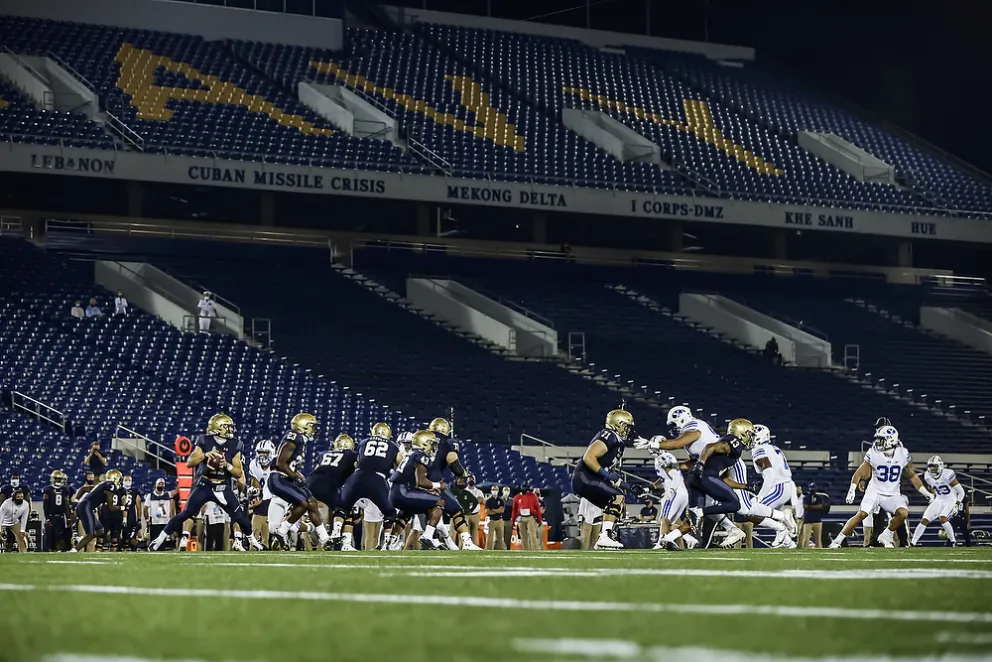
UPAA Blog 2020-21 #2 - 9/11/20 (text and photos by Jaren Wilkey) Jaren Wilkey is Manager of Visual Communications - BYU Photo. On Labor Day 2020, BYU played the Naval Academy in Annapolis, Maryland; one of the first handful of college football games held in the "new normal" of COVID-19 protocols and precautions. (See BYU's published multimedia presentation here.) Jaren gives a behind-the-scenes look at the new--and the familiar--aspects of football coverage in a pandemic.
The COVID-19 Pandemic has changed everything at our university, especially for our athletic department. In the space of a few days in early August we lost 10 of our 12 scheduled games for the 2020 season.
We’ve scrambled and picked up a bunch of new games and I was really excited to hear that we would be opening the season on Labor Day against the Naval Academy. Our team has done a great job of making adjustments during camp such as wearing masks and adding physical distancing to practices and team meetings. They just want to play football.
For the past few years we’ve had a portion of our travel party fly to games via commercial flights in order to allow for a smaller charter plane for the team, but this year they felt like it would be safer to put the entire travel party on one plane. The entire travel party is tested for COVID three times a week, which is mercifully accomplished via a saliva test. You are required to pass the test before you will be allowed to travel. Initially I was worried that the team might not be able to bring me on their road trips, but they reassured me that I needed to be there to document this crazy season.
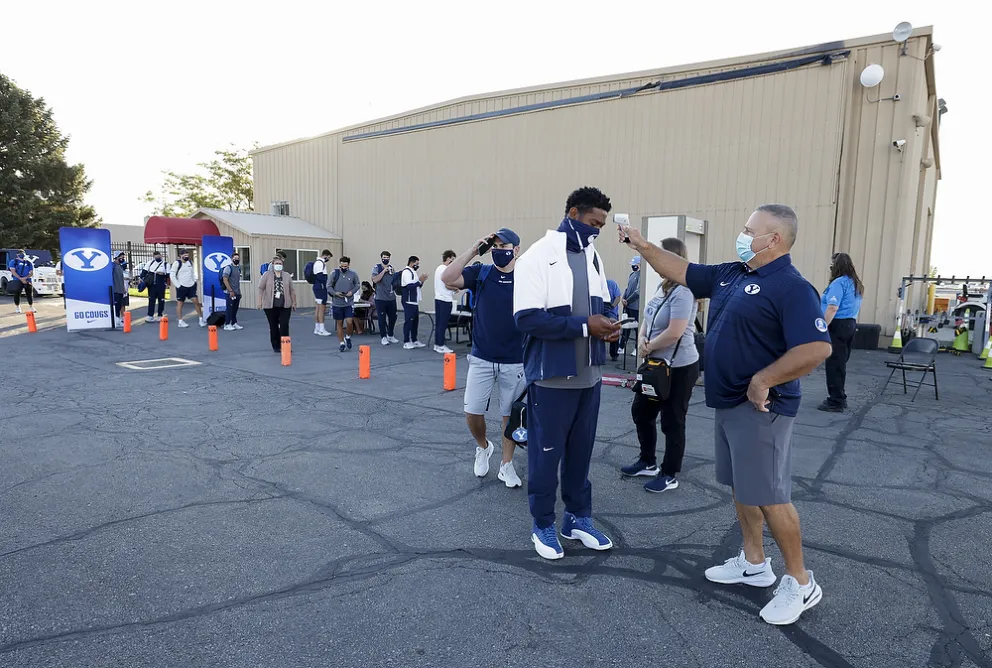
Temperature checks before boarding the plane to Annapolis
On the plane the middle seats were open and we wore our masks at all times except for when we were eating. We went directly to our hotel and we were not allowed to leave the hotel for any reason. No food runs, no meeting with friends or family. Nothing. The only people who were allowed to leave were the managers who needed to go to the stadium and set up the locker room. We didn't even get to do our traditional stadium walk through or our team movie the night before the game. Basically once we got to the hotel we didn't leave until we were on the way to the stadium. We wore masks at all times outside of our rooms unless we were eating. It sounds boring, but it was just fine. I watched a "We Bare Bears" marathon on TV.
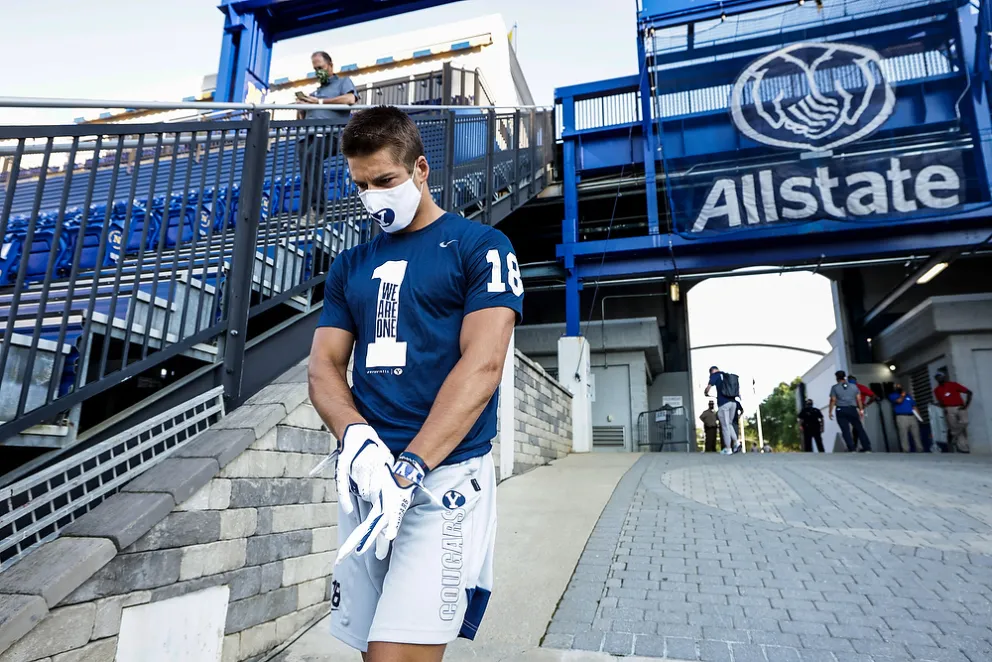
Gunner Romney heads to the field for warmups.
I must give a lot of credit to the Naval Academy staff, they did a great job of hosting us. It must have been difficult to hold one of the first big games on national television with all the added scrutiny that comes with it. The AAC rules are interesting. There are basically 2 groups of people in the stadium. Coaches and Players get Blue credentials. They can go to team buses, Team Entrance and Exit, Team locker room, Playing Field, Team Bench and the Coaching booths.
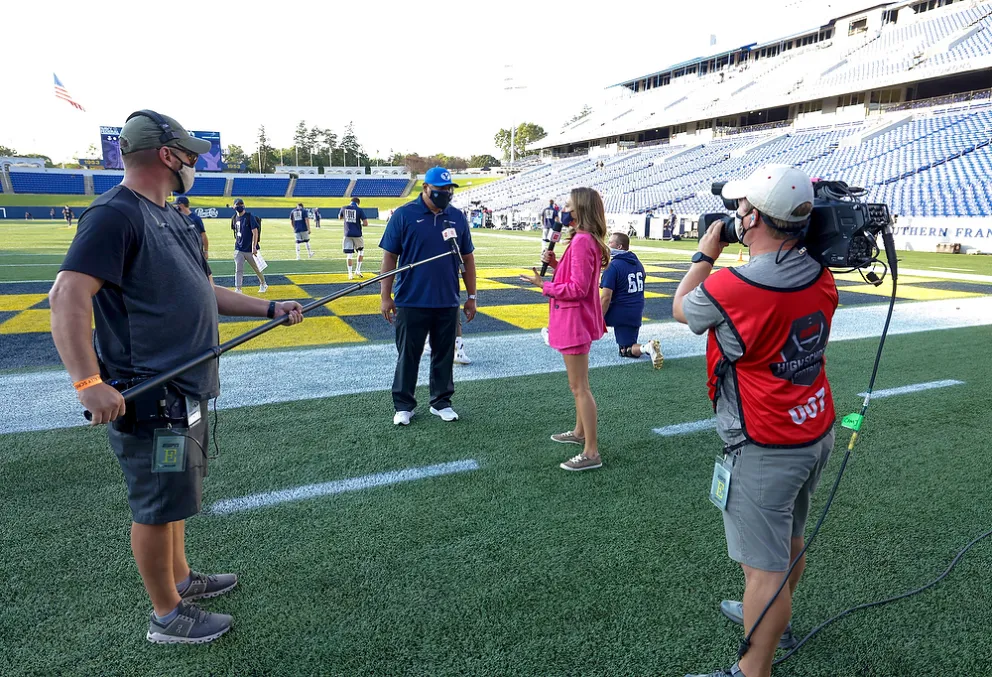
ESPN interview with coach Kalani Sitake
Gray personnel are all the officials, security, game management, media and the team photographer and videographer. Gray personnel could be on certain sections of the field and other areas of the stadium, but they are supposed to stay out of the locker room and the Team Bench and Coaches Box. I could not even use a restroom on the field level or in the locker area, I had to go up to the mezzanine. When I got there security pulled me aside to get a medical screening so I could wear a wristband that let me be in the stands.
Once the teams came out for intros, we couldn't go on the field, but neither could ESPN. Only one captain walked out for the coin toss, so I shot it loose with my 70-200 from the end zone and I love how the shot turned out with all the distancing and the empty stands. Navy also pumped fake crowd noise into the stadium during the game, and played music during time outs, which was really an odd choice considering who was there to actually hear it. Once the game started everything else just receded and it was just . . .normal. It was football.
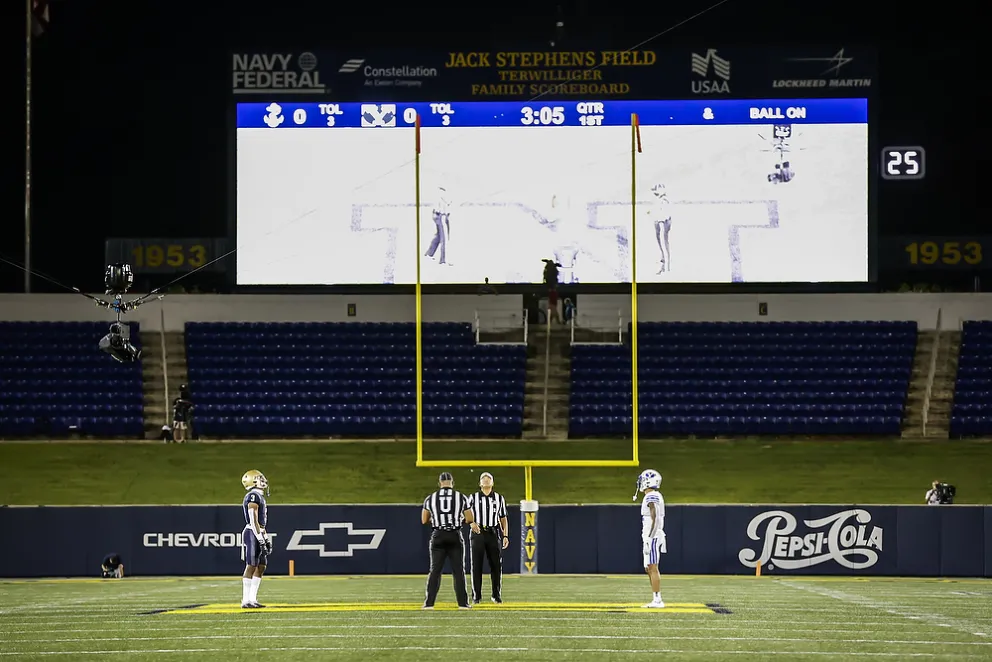
A socially distanced coin toss
The AAC allows 12 photographers on the field. That includes AP, Getty, USA Today, media pool and a still photographer and videographer from both teams. The NCAA extended the team box from the 25 down to the 15 yard line, but then the AAC added an additional buffer between the Team Bench and ESPN/media. That meant that we couldn’t shoot on the sidelines past the 8 yard line.
The problem was that I still had the Red Hat Official, instant review and ESPN in my way so I could only shoot from about the 2 yard line, so most of what I did was from the end zone. They didn't want us to linger walking behind the bench either and take photos of the team. In the end zone we were asked to not sit in front of the logos, so there was plenty of space, but not as much as you would think. It seems silly to me that the team photographer who was in the team bubble can’t be with their team in the locker room or on the sidelines. I hope that this rule can be adjusted as the season progresses.
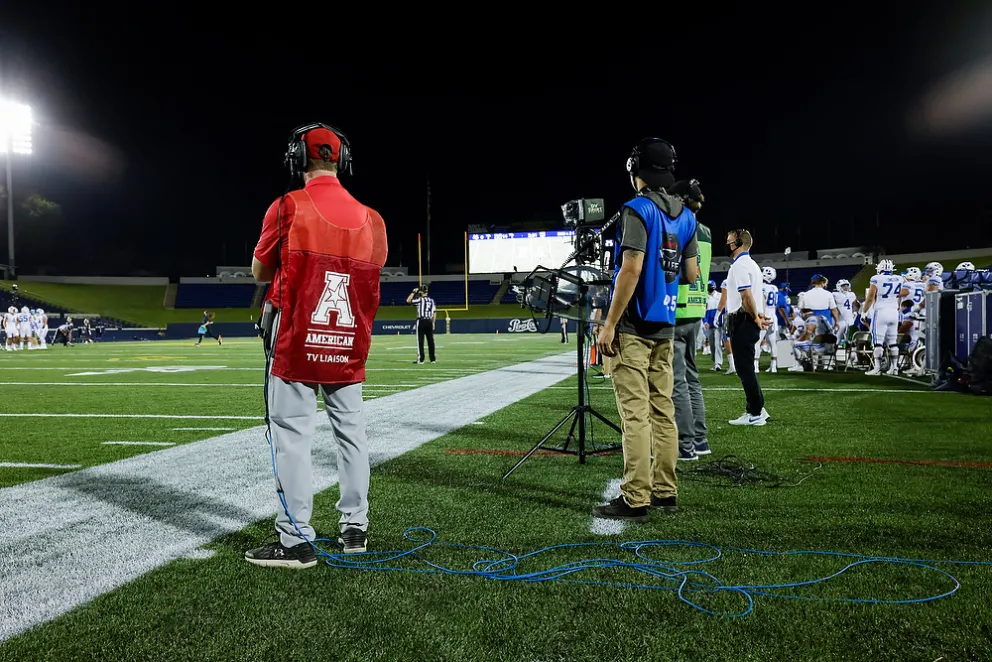
"That dashed line? Oh, that doesn't apply to me..." Some things don't change even in a pandemic! The Red line visible in the photo is at the 8-yard line, the limit of sideline access. (If you can shoot around TV, that is!)
Every game has a storyline that I need to make sure and tell through my photos. BYU has been playing football since 1896 and this would be the first time that we have ever played in front of an empty stadium. I needed to show the game in that context, which meant that I made sure to get a variety of overalls from the stands and several low angle shots that emphasized the rows of empty seats.
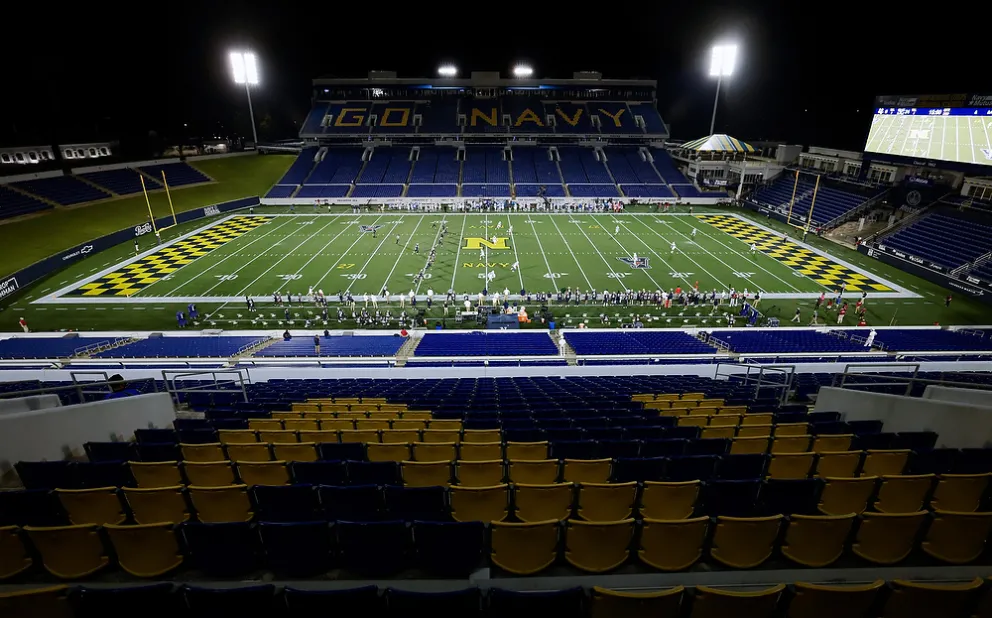
No crowd...but still crowd noise.
I'm used to being the only team photographer on the road, but it was actually quite difficult to cover the game with the sidelines restrictions and my inability to enter the team box. It was also hard to capture emotions on the sidelines from the end zones, especially with coaches who were wearing masks. I usually shoot football with a 500 mm lens and I'm glad I had it, a 400 mm would just have been too loose. During the 2nd half I went up into the stand to get the overall of the empty stadium, and I ended up shooting most of the quarter from up there, which gave me some different angles, but I still had trouble capturing the emotions of the game.
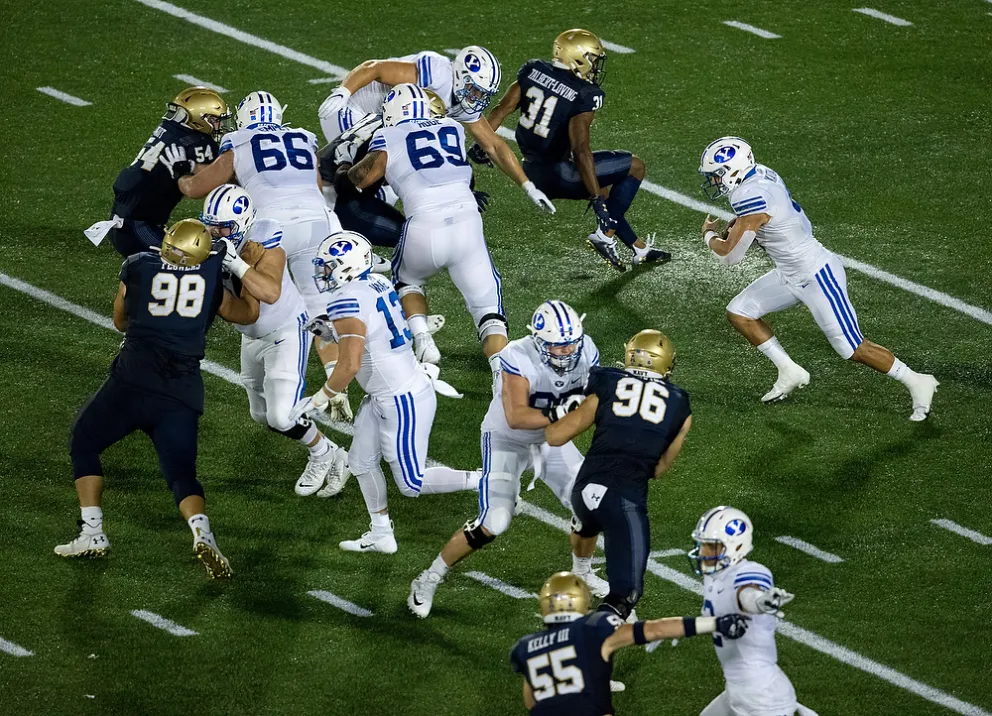
The view from the stands gives me an opportunity to highlight our dominant offensive line.
I used wireless FTP and a hotspot to send over 200 photos to Photoshelter and my staff make edits available to the local media in real time. One thing that I learned is that wireless FTP works great in an empty stadium. Our local media was grateful to have something quicker than AP or Getty, especially without the heavy local team bias you usually get with a wire service. We'll be doing the same things for our home games.
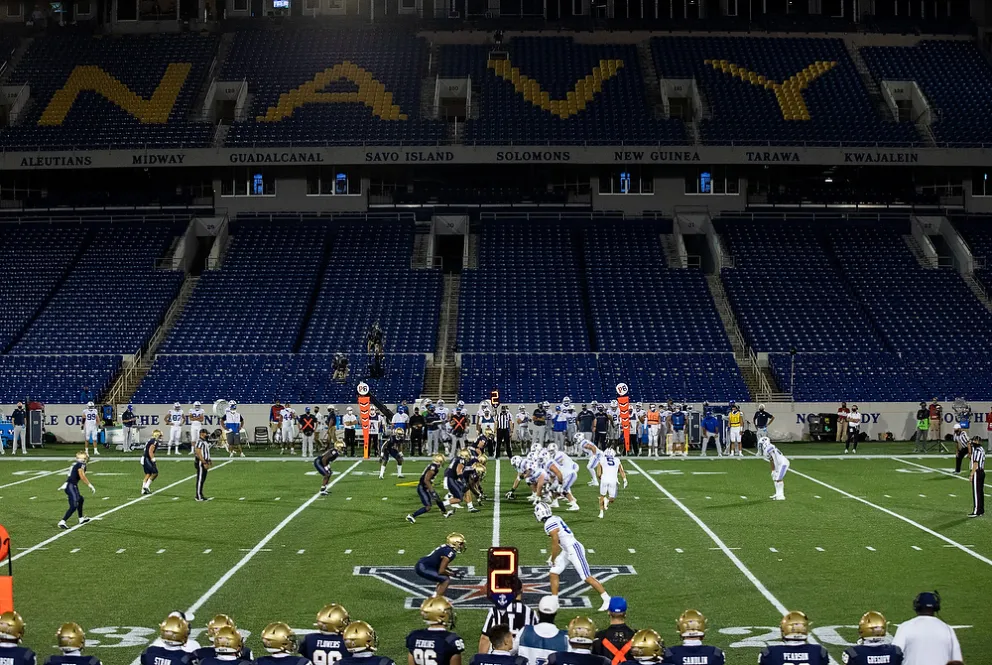
"Once the game started everything else just receded and it was just...normal. It was football."
In the end I was grateful to photograph a game again.
_________________________________________________
"I've found prayers work best when you have big players." -Knute Rockne. Thank you to all who contribute to the UPAA blog. If you have a contribution or suggestion, email editor Matt Cashore, mcashore@nd.edu.